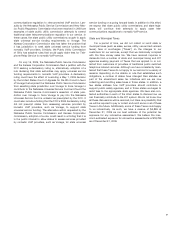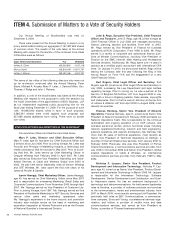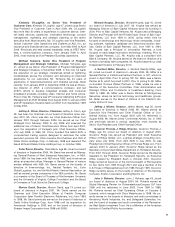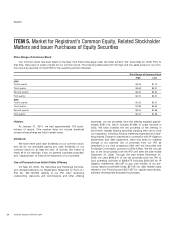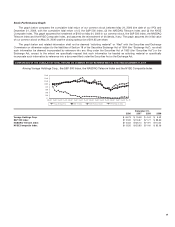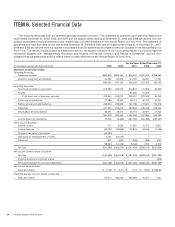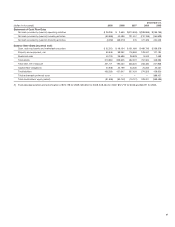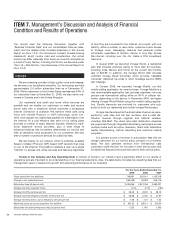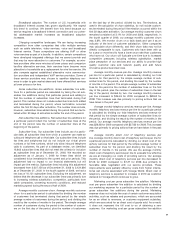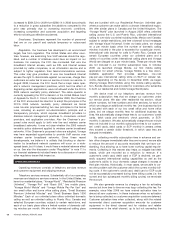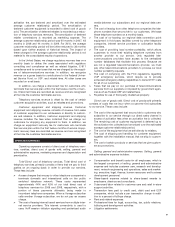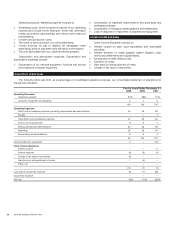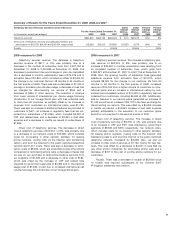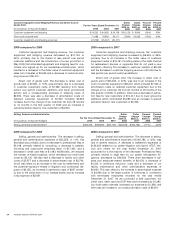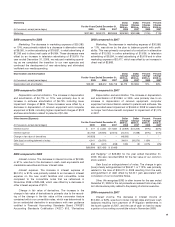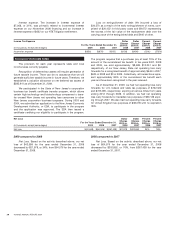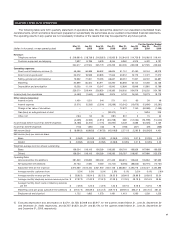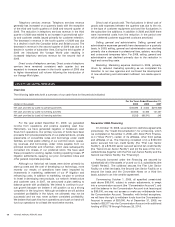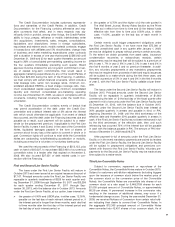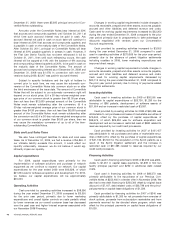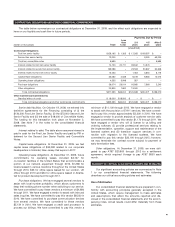Vonage 2009 Annual Report Download - page 39
Download and view the complete annual report
Please find page 39 of the 2009 Vonage annual report below. You can navigate through the pages in the report by either clicking on the pages listed below, or by using the keyword search tool below to find specific information within the annual report.
activation fee, are deferred and amortized over the estimated
average customer relationship period. The amortization of
deferred customer equipment is recorded to direct cost of goods
sold. The amortization of deferred rebates is recorded as a reduc-
tion of telephony services revenues. The amortization of deferred
retailer commissions is recorded as marketing expense. The
average customer relationship period was 60 months in 2007, 48
months in 2008 and 44 months in 2009. For 2010, the average
customer relationship period will be further reduced to 38 months
based upon further analysis of historical trends. The impact of
these changes to the average customer relationship period is not
material to the consolidated results of operations.
In the United States, we charge regulatory recovery fees on a
monthly basis to defray the costs associated with regulatory
consulting and compliance as well as related litigation, E-911
compliance and to cover taxes that we are charged by the suppli-
ers of telecommunications services. In addition, we recognize
revenue on a gross basis for contributions to the Federal Univer-
sal Service Fund, or USF, and related fees. All other taxes are
recorded on a net basis.
In addition, we charge a disconnect fee for customers who
terminate their service plan within the first twelve months of serv-
ice. Disconnect fees are recorded as revenue and are recognized
at the time the customer terminates service.
Telephony services revenue is offset by the cost of certain
customer acquisition activities, such as rebates and promotions.
Customer equipment and shipping revenue. Customer
equipment and shipping revenue consists of revenue from sales
of customer equipment to our wholesalers or directly to custom-
ers and retailers. In addition, customer equipment and shipping
revenue includes the fees when collected that we charge our
customers for shipping any equipment to them. In addition, we
charge an equipment recovery fee for customers who terminate
their service plan within the first twelve months of service. Equip-
ment recovery fees are recorded as revenue and are recognized
at the time the customer terminates service.
OPERATING EXPENSES
Operating expenses consist of direct cost of telephony serv-
ices, royalties, direct cost of goods sold, selling, general and
administrative expense, marketing expense and depreciation and
amortization.
Total Direct cost of telephony services. Total direct cost of
telephony services primarily consists of fees that we pay to third
parties on an ongoing basis in order to provide our services.
These fees include:
>Access charges that we pay to other telephone companies to
terminate domestic and international calls on the public
switched telephone network. These costs represented
approximately 44% and 42% of our total direct cost of
telephony services for 2009 and 2008, respectively, with a
portion of these payments ultimately being made to
incumbent telephone companies. When a Vonage subscriber
calls another Vonage subscriber, we do not pay an access
charge.
>The cost of leasing internet transit services from multiple inter-
net service providers. This internet connectivity is used to
carry VoIP session initiation signaling and packetized audio
media between our subscribers and our regional data cen-
ters.
>The cost of leasing from other telephone companies the tele-
phone numbers that we provide to our customers. We lease
these telephone numbers on a monthly basis.
>The cost of co-locating our regional data connection point
equipment in third-party facilities owned by other telephone
companies, internet service providers or collocation facility
providers.
>The cost of providing local number portability, which allows
customers to move their existing telephone numbers from
another provider to our service. Only regulated tele-
communications providers have access to the centralized
number databases that facilitate this process. Because we
are not a regulated telecommunications provider, we must
pay other telecommunications providers to process our local
number portability requests.
>The cost of complying with the FCC regulations regarding
VoIP emergency services, which require us to provide
enhanced emergency dialing capabilities to transmit 911 calls
for all of our customers.
>Taxes that we pay on our purchase of telecommunications
services from our suppliers or imposed by government agen-
cies such as Federal USF and related fees.
>Royalties for use of third-party intellectual property.
Direct cost of goods sold. Direct cost of goods sold primarily
consists of costs that we incur when a customer first subscribes
to our service. These costs include:
>The cost of the equipment that we provide to customers who
subscribe to our service through our direct sales channel in
excess of activation fees when an activation fee is collected.
The remaining cost of customer equipment is deferred up to
the activation fee collected and amortized over the estimated
average customer relationship period.
>The cost of the equipment that we sell directly to retailers.
>The cost of shipping and handling for customer equipment,
together with the installation manual, that we ship to custom-
ers.
>The cost of certain products or services that we give custom-
ers as promotions.
Selling, general and administrative expense. Selling, general
and administrative expense includes:
>Compensation and benefit costs for all employees, which is
the largest component of selling, general and administrative
expense and includes customer care, research and develop-
ment, network engineering and operations, sales and market-
ing, executive, legal, finance, human resources and business
development personnel.
>Share-based expense related to share-based awards to
employees, directors and consultants.
>Outsourced labor related to customer care and retail in-store
support activities.
>Transaction fees paid to credit card, debit card and ECP
companies, which include a per transaction charge in addi-
tion to a percent of billings charge.
>Rent and related expenses.
>Professional fees for legal, accounting, tax, public relations,
lobbying and development activities.
>Litigation settlements.
31


